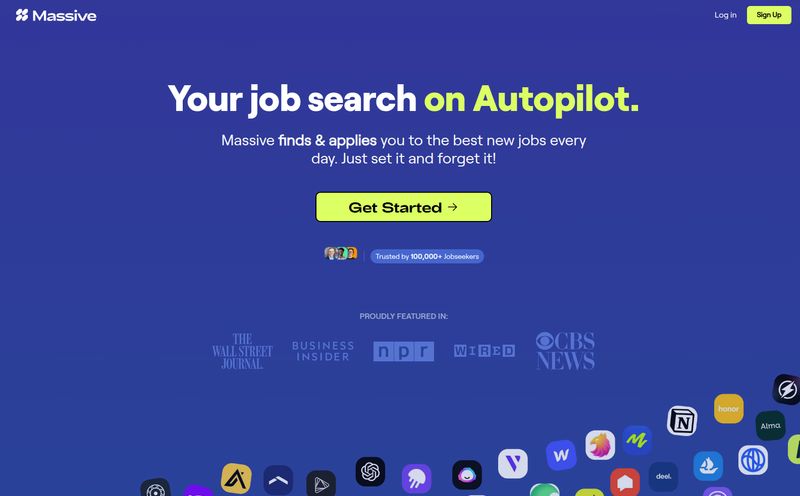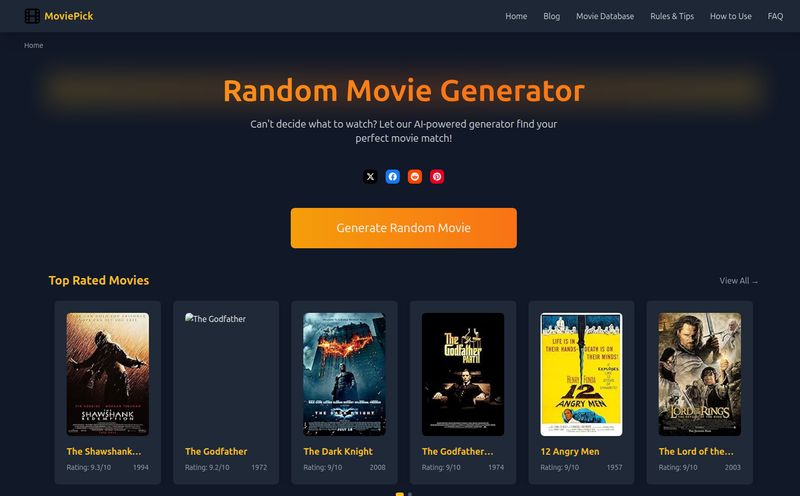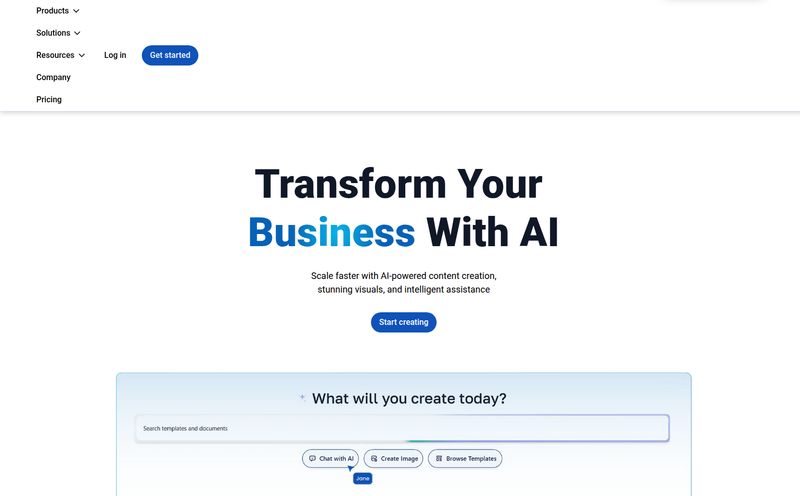Remember high school biology? I do. I remember staring at a flat, 2D diagram of a cell in a textbook that probably cost my parents a small fortune. The mitochondria was just an orange oval. The nucleus, a purple circle. It was... fine. It did the job, I guess. But did I ever really feel like I understood the bustling, three-dimensional city inside that cell? Not a chance.
For years, we've been told that technology would change all that. And for years, as someone who lives and breathes digital trends, I've seen a lot of promises fall flat. But every now and then, something comes along that makes you lean forward in your chair. Something that feels less like an incremental update and more like a genuine leap.
I think CuriosityXR might be one of those leaps.
It’s a platform that wants to take that flat diagram from my old textbook, pull it off the page, and let me walk around it in my own living room. It's an ambitious idea that blends mixed reality (MR), a massive library of 3D objects, and a personal AI tutor. So, is it the real deal, or just another piece of high-tech vaporware? Let's get into it.
What Exactly is CuriosityXR? (And Why Should You Care?)
Okay, let's break this down. Forget the jargon for a second. Imagine having a magic pair of glasses. You put them on, and suddenly you can pull almost any object you can think of out of thin air and place it on your coffee table. Want to see a T-Rex skeleton? Boom, it’s there, life-sized, standing next to your couch. Want to understand how a car engine works? Pop the hood on a virtual one and pull the pieces apart with your hands.
That's the core promise of CuriosityXR. It uses a mixed reality headset (like a Meta Quest) to overlay these interactive 3D models onto your real-world environment. But here's the kicker: it’s not just a library of cool stuff. It has an AI Teacher built in. You can literally ask it questions, out loud. “Hey, what does this part do?” or “Show me what the world looked like during the Jurassic period.” The AI then guides you, creating a personalized lesson just for you, right on the fly.
It’s about shifting from passive consumption—staring at a book—to active, hands-on exploration. And as someone who has seen countless clients struggle to create engaging content, this kind of interactivity is the holy grail.
The Features That Actually Matter
A tool can have a million features, but only a few usually make a real difference. Here’s what stood out to me about CuriosityXR.
A Library of Over a Million 3D Models
This number is wild. One million models. We're talking about everything from the human heart to historical landmarks, from complex machinery to abstract mathematical concepts. The sheer breadth of this library is its biggest strength. It means the platform isn’t just for a single subject. A student could go from dissecting a virtual frog for biology class to exploring the architecture of the Roman Colosseum for history in the same afternoon. This isn't just a tool; it's a portal to, well, almost anything you want to learn about.

Visit CuriosityXR
Your Own Personal AI Tutor
The AI Teacher is what separates this from being just a cool 3D model viewer. The ability to interact with your voice and get personalized responses is a game-changer. Think about a typical classroom of 30 kids. The teacher can’t possibly give every student one-on-one attention. But an AI can. It can adapt the lesson to your pace, answer your specific questions, and follow your threads of curiosity wherever they lead. It turns learning from a lecture into a conversation. I've seen AI chatbots for customer service, but applying this conversational AI to education... that’s powerful stuff.
Stepping Into Your Learning with Mixed Reality
I have to stress this point: this is mixed reality, not just virtual reality. VR puts you in a completely digital world, blocking out everything else. MR, on the other hand, blends the digital and the physical. You see the 3D model of the solar system floating in your room. This is a subtle but huge distinction. It makes the experience feel more grounded and less isolating. It also lowers the barrier for people who might get disoriented in full VR. Seeing your own hands and your own furniture alongside the virtual object makes it all feel much more tangible and, frankly, more magical.
My Experience and Honest Thoughts
Alright, let's get down to brass tacks. I've been in the SEO and digital marketing world long enough to know that a great concept on paper doesn't always translate to a great user experience. Here's my take on the good and the, well, not-so-good.
The Good Stuff: Why I'm Genuinely Excited
The potential for engagement here is off the charts. For kinesthetic learners—people who learn by doing—this is a dream come true. You can’t truly understand the scale of a blue whale from a picture. But when a virtual one is swimming through your living room? That sticks with you. I believe this could be revolutionary for homeschooling parents trying to make subjects come alive, or for teachers looking for a way to capture the attention of a generation raised on interactive media. It’s an experience, not just a lesson, and in the world of content and traffic, experiences are what win.
The Hurdles and Real-World Concerns
Now for the reality check. First, the hardware gate. CuriosityXR requires a mixed reality device like the Meta Quest. These headsets aren't cheap, running several hundred dollars. This immediately creates an accessibility issue. Can every family afford one? Can every school district deploy them at scale? It’s a significant barrier that can't be ignored.
Second, there’s the double-edged sword of AI. While a personal AI tutor is amazing, I do have a nagging question in the back of my mind. Are we teaching kids how to think critically, or just how to get answers from an AI? There needs to be a balance. Over-reliance on this kind of tool could, paradoxically, make us less resourceful. It’s a conversation the entire ed-tech industry needs to be having.
Finally, a small, but telling detail. As I was digging around for this piece, I tried to pull up their website for some extra info and… a 404 error page greeted me. Whoops. Look, it happens to the best of us; maybe they were pushing a big update or the server was just having a bad day. But it's a little reminder that cutting-edge tech can sometimes come with cutting-edge hiccups. It adds a layer of, let's say, 'pioneering spirit' to the user experience.
Who Is This Really For?
I see a few key groups getting a ton of value out of CuriosityXR.
- Homeschooling Families: This could be the ultimate tool for making education dynamic and breaking out of the textbook rut. It's like having an entire science museum and a history archive on call.
- Forward-Thinking Educators: For a teacher with the resources and the passion to try new things, this could be an incredible station in a classroom rotation. Imagine the buzz in the room when one group gets to explore the pyramids in MR.
- Lifelong Learners: Honestly, I want this for myself. Anyone who is just plain curious about how things work could lose hours (in a good way) exploring the vast library and asking the AI questions they were always too afraid to ask.
What About the Price Tag?
This is the big question, isn't it? As of my writing this, there's no public pricing information available for CuriosityXR. Their website and app store listings are pretty quiet on the subject. This often means a product is still in an early phase or targeting enterprise/educational clients with custom quotes.
My best guess? We'll probably see a subscription model, maybe with different tiers for individuals, families, and schools. A 'freemium' version with access to a limited number of models would also be a smart play to get people hooked. But for now, the cost remains a mystery.
Frequently Asked Questions (FAQ)
- What hardware do I need for CuriosityXR?
- You'll need a mixed reality headset. The platform is primarily developed for devices like the Meta Quest 2, 3, and Pro.
- Is CuriosityXR suitable for young children?
- While the content is educational, the use of VR/MR headsets is generally not recommended for very young children. Most headset manufacturers, like Meta, recommend users be 13 years or older.
- Can I use CuriosityXR in a classroom setting?
- Absolutely. It seems perfectly designed for classroom and group learning environments, provided the school can manage the hardware and software deployment.
- How is this different from other VR education apps?
- Two main things: the use of mixed reality (blending digital with your real world) instead of just VR, and the integrated AI Teacher that provides personalized, voice-activated guidance.
- Is there a free trial for CuriosityXR?
- Information on a free trial isn't available right now. This might change as the platform becomes more widely available.
- What subjects does CuriosityXR cover?
- With over a million models, it covers a huge range of subjects, including STEM (Science, Technology, Engineering, Math), History, Arts, Anatomy, and more.
A Glimpse of the Future, With Caveats
So, what’s the final word? I don’t think CuriosityXR is just a fad. I think it’s a serious, thoughtful look at what the future of education could be. The idea of untethering knowledge from the printed page and making it a tangible, interactive experience is incredibly exciting.
It's not perfect. The hardware costs are real, and we need to be smart about how we integrate AI into learning. But platforms like CuriosityXR are pushing the boundaries. They're forcing us to ask bigger questions about how we teach and learn. And even if it’s a little buggy or the website is down for a bit, that’s the price of innovation. For me, it's a price worth paying to finally see that mitochondria as more than just an orange oval.
Reference and Sources
- For more on the effectiveness of this type of learning, check out research on kinesthetic and experiential education. Edutopia has some great articles on the topic: The Benefits of AR and VR in Education.
- Hardware information is based on the Meta Quest series of headsets, which you can learn more about on the official Meta Quest website.



